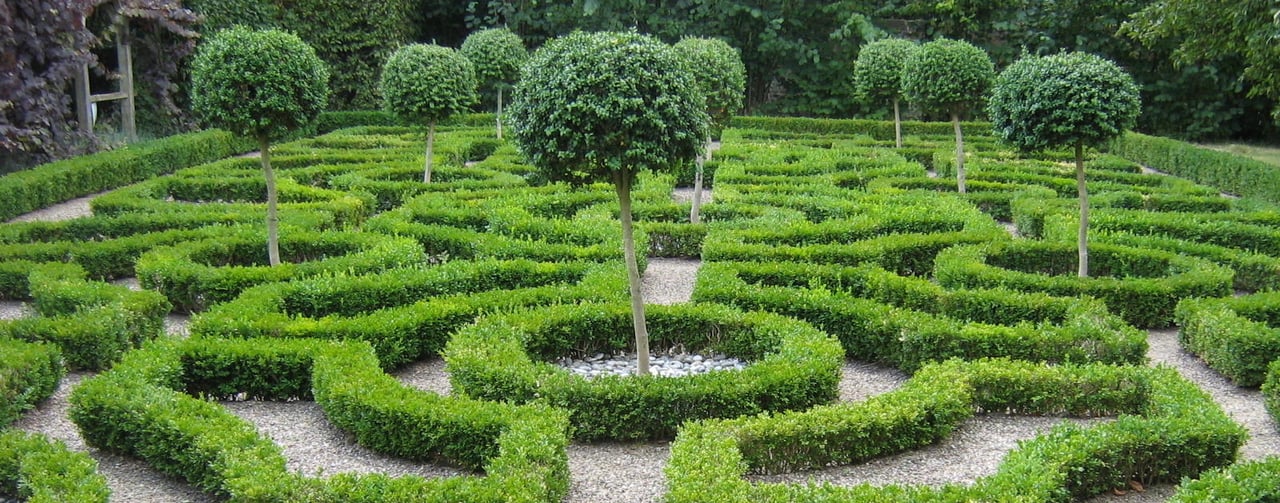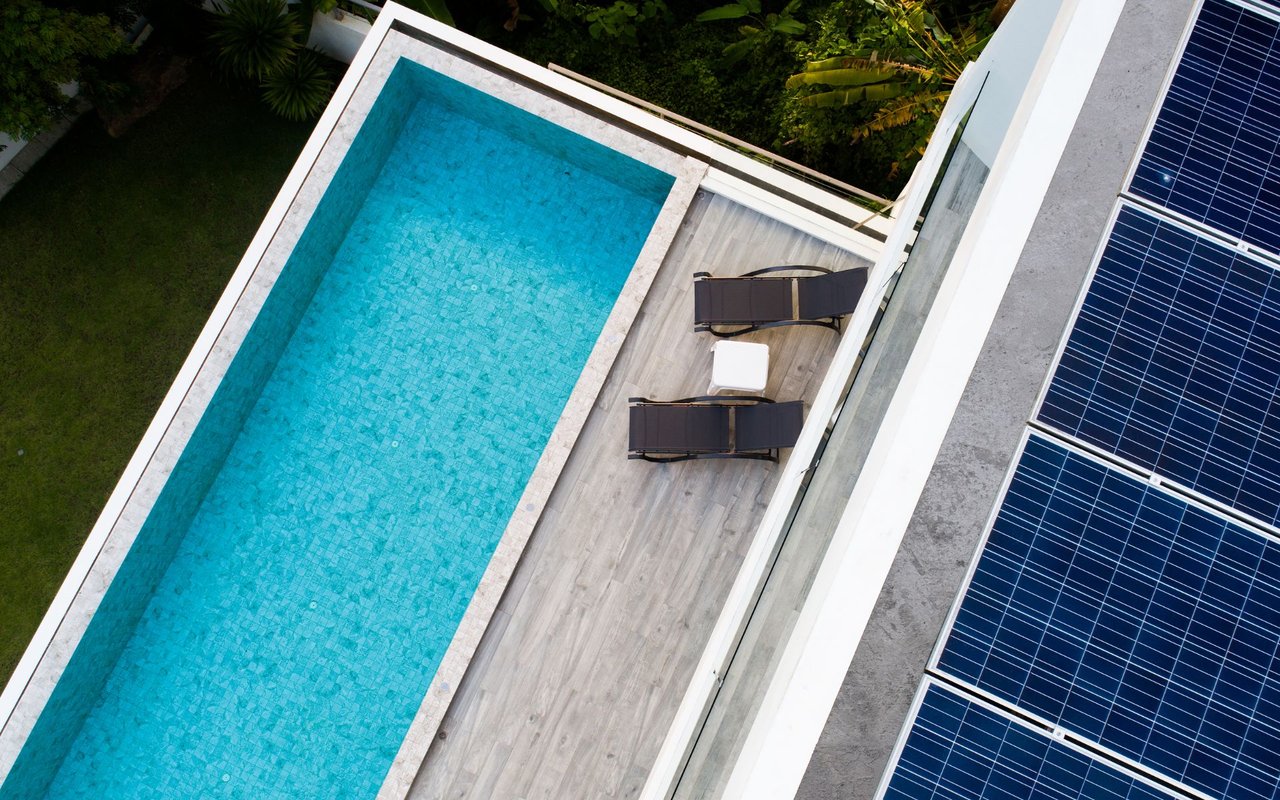For many people, keeping up that perfectly manicured, green lawn is synonymous with success as a homeowner. As Americans, we collectively spend around 29 billion dollars each year on lawn care, and around 78 million households around the country rely on some sort of chemical pesticide to maintain our lawns and gardens free of bugs. Herbicides are another major chemical input that our lawns require, with an astonishing 90 million pounds applied on lawns and gardens around the country each year.
Common herbicides like Roundup, however, have recently been linked as a probable cause of cancer, and the runoff of common lawn pesticides and fertilizers are partly responsible for a massive dead zone in the Gulf of Mexico.
Those supposedly beautiful green lawns that dot our urban and suburban landscapes, then, often come with a high ecological cost that we rarely stop to think about. Fortunately, there are several strategies and alternatives available to homeowners who wish to create a healthy, beautiful, and ecologically resilient sustainable landscaping systems around their home. Instead of monocultures of green grass that require an enormous amount of chemical inputs to be able to survive, sustainable landscaping options can offer food, wildlife and insect habitat, alternative herbal and medicinal plants, and native beauty while also radically reducing maintenance costs.
Below, we offer a complete rundown of how you can implement a sustainable landscaping solution for your yard and garden.
I. Overview
A Bit of Background
According to the U.S. EPA, American households use around 9 billion gallons of water for outdoor use each and every day. While some of that goes to washing cars and filling up pools, the vast majority of our outdoor water use is used for irrigating our lawns and gardens. In California, where summer and fall droughts are common, emergency measures have been taken in the past to regulate the amount of water used by Californians for irrigating their lawns and gardens.
While the droughts of past years have come to an end, recent legislation passed by Governor Jerry Brown has tasked California Department of Water Resources to come up with recommending standards for outdoor water use by 2021. Making the switch to sustainable landscaping options that are based on native, drought-tolerant vegetation, then, is not only an environmental issue but will most likely become a legal requirement in the near future.
Sustainable and drought-tolerant landscaping shouldn’t be seen as a drab, colorless and unexciting requirement that is required due to environmental regulations. Rather, there are several benefits and advantages that come with transitioning towards water-smart landscapes that are both ecologically resilient and health promoting.
Problems with Traditional Lawns and Landscapes
In the introduction to this article we mentioned a few of the most common problems associated with traditional lawns. Other problems include:
- Stormwater runoff: The chemicals and pesticides often used on lawns are often swept into local watersheds where they can potentially pollute rivers, streams, creeks, and groundwater sources which are often used for municipal water systems.
- Colony Collapse Disorder: Bees pollinate virtually every major food crop that our society depends on. Unfortunately, bee populations across the world have been dropping drastically in recent years, and some studies consider that exposure to pesticides is one of the leading causes. A manicured, chemically-coated green lawn, then, might inadvertently be leading us towards an ecological collapse that could severely impact our food systems.
- Economics: Most homeowners spend between $127 to $237 each year on caring for grass that they rarely use. Sustainable, drought tolerant landscaping options, on the other hand, can drop that cost to zero once installed and actually provide your home with certain food items.
The Solution: What is Sustainable Landscaping?
Sustainable landscaping looks to replace those chemically dependent, perfectly manicured, monocultures of green grass lawns with diversified, drought tolerant, mostly native species that are environmentally regenerative and promote healthy ecosystems. In California, sustainable landscaping focuses on significantly reducing the watering needs of residential yards and gardens while also helping to restore urban habitat for several species.
Additionally, sustainable landscaping has other tangible and practical aspects for homeowners. Edible landscaping solutions allow homeowners to obtain a steady supply of organic, locally produced fruits, vegetables, and medicinal herbs. Because sustainable landscaping solutions do not require chemical inputs, there are also noticeable health benefits. Instead of subjecting children, pets, and adults to potentially dangerous chemicals, sustainable landscaping options help to create a healthy and safe environment around the home.
II. Your Needs: Style & Function
There is no rulebook for sustainable landscapes or a plant list for what must be included. Rather, sustainable landscaping solutions will largely depend on local climatic conditions, the preferences and goals of homeowners related to the amount of time they can commit to their lawns and gardens, and the aesthetics of what they want to achieve. Sustainable landscaping can be implemented in the small green areas around urban high-rise apartments, in the traditional suburban lawn, and on multi-acre rural properties. There are, however, certain guiding principles that can help people from all housing situations design a highly functional, aesthetic, and ecologically resilient landscape.
The Function
The starting point for designing an urban landscape is to think about what functions and roles you want your lawn and garden to perform. The concept of green, monoculture, grass lawns originally arose from wealthy landowners and barons who wanted to demonstrate their affluence through showing their agrarian subjects and neighbors that they had so much land that it wasn’t necessary to till it all for agricultural purposes. The “function” of lawns, then, was originally to substantiate social inequalities. Today, the idea of “keeping up with the Joneses” through maintaining a lawn as green and perfectly manicured as your neighbors continue to maintain aspects of that original function.
Sustainable landscapes, on the other hand, situate the function of lawns and gardens within the wider ecosystem to which they belong. To this end, the questions homeowners must ask themselves include:
- How can we reduce water usage?
- Do we want our lawns and gardens to produce edible or medicinal plants we can utilize?
- How can we reduce dependence on chemical inputs in order to attract wildlife and protect our own health?
While there are dozens of potential functions that an area around a home can fill, some potential functions of sustainable landscapes might be:
- Habitat Restoration: There are not a lot of animals that can thrive in chemically-soaked monocultures of grass. Sustainable landscapes that focus on native vegetation that is organically grown will offer a needed urban or suburban habitat for dozens of species of insects, birds, mammals, and others. Some practical elements of habitat restoration include using non-toxic fertilizers and pesticides, diversifying vegetation with different types of plants, including trees, bushes, and underlying grasses to mimic natural habitat areas, and reducing outdoor night lighting.
- Reduction of Water Usage: In California and other drought-prone areas this function of sustainable landscapes is ecologically important and economic common sense. By replacing thirsty turf grass with drought-tolerant shrubs, trees, and other perennial plants, you can lower your utility bill while also experimenting with beautiful landscaping options. Some strategies to reduce water usage including implementing bio-swales, prioritizing native, drought-tolerant vegetation, and implementing rain harvesting and greywater recycling systems.
- Food Production: According to the Bureau of Labor Statistics, Americans spend an average of $259 each year on fresh vegetables and $295 on fresh fruits. The majority of those fruits and vegetables are produced using a wide range of agrochemicals and shipped from around the world. Prioritizing food production as part of a sustainable landscape can save homeowners money while also providing a healthy and organic source of food. Food production strategies and elements can include everything from vegetable gardens to mini-urban food forests.
Following from permaculture design principles, every element included in your sustainable landscape design should perform several functions. For example, one function of a simple flower garden should be to provide aesthetic beauty in front of your home. However, through carefully choosing the types of flowers you plant, a flower garden can also create habitat for ecologically important pollinator species and even provide certain edible products for your homemade salads.
Pick Your Style
Thinking carefully about the functions you want your sustainable landscape to perform, and which elements you will incorporate to help achieve these functions is by far the most important part of the design process. The landscaping style you choose will inevitably follow from an analysis of how you can best implement the functions that are important to you as a health-conscious environmentally aware homeowner.
Fortunately, almost all landscape “styles” can be adapted to promote improved ecological functions. For example, a homeowner with 10 acres of surrounding lawn and group of people who share an apartment building with 200 square feet of a green area can both implement a type of food forest landscaping option that prioritizes several “levels” of vegetation aimed at maximizing food production.
Similarly, while we might think of a typical suburban yard as a great place to implement a diversified, organic vegetable garden, a comparable raised bed garden system can even be implemented on a high-rise apartment rooftop.
The landscaping style you choose will depend on your own tastes and the amount of time you want to dedicate to implementing and maintaining the area around your home. Some modern homes might naturally trend towards clean, minimalist landscapes with geometrical lines and shapes that also promote certain ecological functions. Townhouses and suburban areas might prefer diversified meadow landscapes with gardens and food forests intertwined.
In Summary
Creating a beautiful sustainable landscape can become the work of a lifetime, or it could be as simple as hiring a sustainable landscaping professional (see resources below) to design and implement a low-maintenance, ecologically resilient plant paradise around your home. Either way, the important thing is to take the time to think about how you can minimize your lawn and gardens irrigation needs, reduce dependence on agrochemicals, allow rainwater to infiltrate the soil, and increase the ecological resilience of the area around your home. If you are interested in learning more about sustainable landscaping options, future articles will look at more advanced topics such as rainwater catchment systems, greywater recycling, water permeable driveways, or native California plants that are great for attracting pollinating insects.

